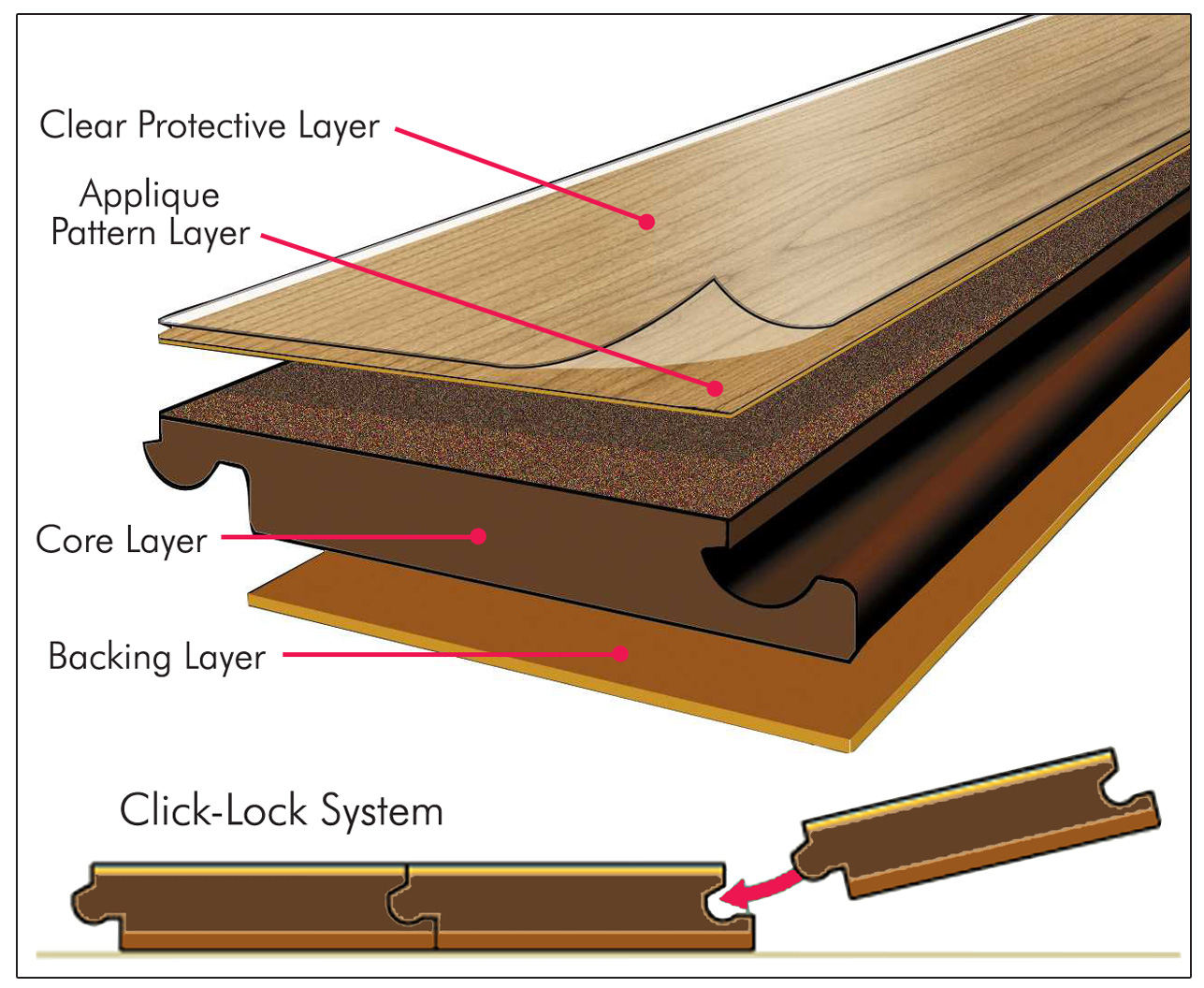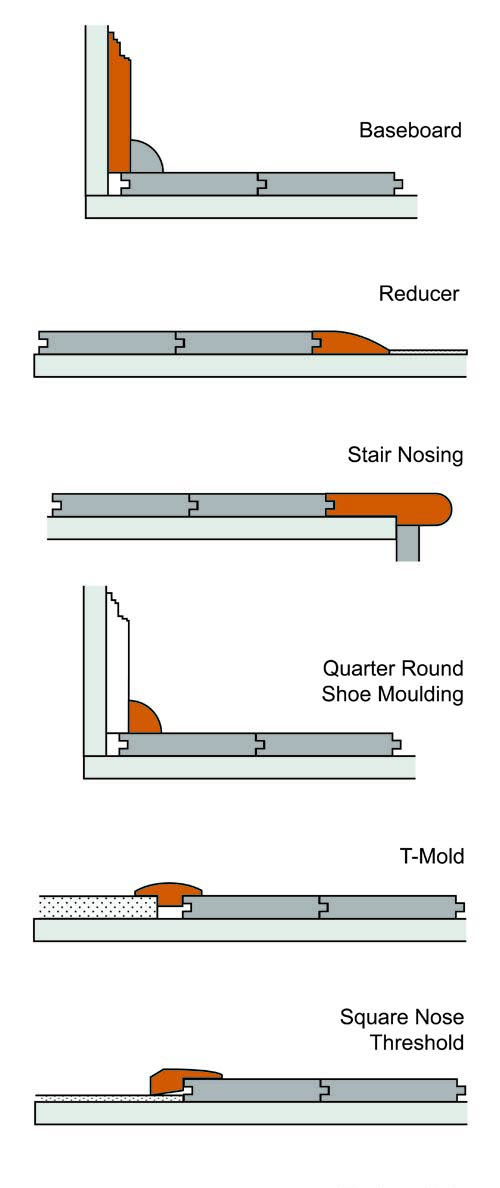BUYING TIPS
FLOORING

Hardwood
Solid or Engineered - What's the Difference?
Both are 100% REAL WOOD!
Solid Hardwood Flooring is milled from one thick piece of 100% solid wood and can be sanded and refinished several times. Since solid wood generally expands and contracts a lot more than engineered wood during climatic changes, especially extremes in heat and cold and the rainy season, it is traditionally only used for above-grade locations. It is unsuitable for areas which are not environmentally controlled, damp areas such as below-grade installations, and over radiant heat.
Engineered Hardwood is also 100% wood, but is made of hardwood veneer layers that are stacked on one another, with the grain of the adjacent layers oriented perpendicular to each other. Because the wood expands and contracts in the direction of the grain, one layer stabilizes the next, resulting in a product that is less susceptible to the effects of moisture and temperature change. This allows it to be installed above or below grade, and even over concrete. It is better suited for moist climates.
Both Solid and Engineered are considered Hardwood and add value and beauty to your home.

Laminate
Laminate Flooring is a multi-layer synthetic product fused together with a lamination process. It simulates wood, stone or tile with a photographic applique layer under a clear protective layer. The core layer is usually composed of melamine resin and fiber board materials.
Due to laminate flooring being a printed strip of vinyl over a composite board many textures and styles of flooring can be successfully replicated. Wood, stone and tile can actually look quite natural and often stands up better in high traffic areas.
The tongue and groove planks and Click-Lock systems are easy for DIYers to install and cost less than traditional hardwood. Laminate flooring is versatile, durable, and easy to clean.

Moulding
Hardwood Moulding is a decorative trim used to finish your floors or stairs. It can also be used to transition from one room to another when different types of flooring are used in different rooms.
Typically Baseboard is installed where the floor meets the wall to give your room a more finished look.
Reducer is used to smoothly transition hardwood flooring to a second flooring type, such as vinyl, tile or even low pile carpet, using a gradual slope.
Stair Nosing gives the edge of your stairs a nice rounded finish. It butts right up against the floorboards and creates a seamless transition to the end of the step.
Quarter Round or Shoe Moulding is used at the bottom of the Baseboard for a more decorative finish, but can also be used without a Baseboard.
T-Mold is used to transition from one room to another, especially if different types of flooring are being used, such as hardwood in one room and tile in another. It can only be used if the height of the flooring in each room is the same. T-Mold should not be used to transition to carpet.
Square Nose Threshold is similar to Reducer, but instead of a gradual slope it has a
rounded off square edge. Threshold is used when butting a hard surface floor up to a high pile carpet and
is also often used when hardwood or laminate floors are meeting up with a sliding glass door track.